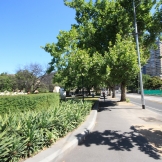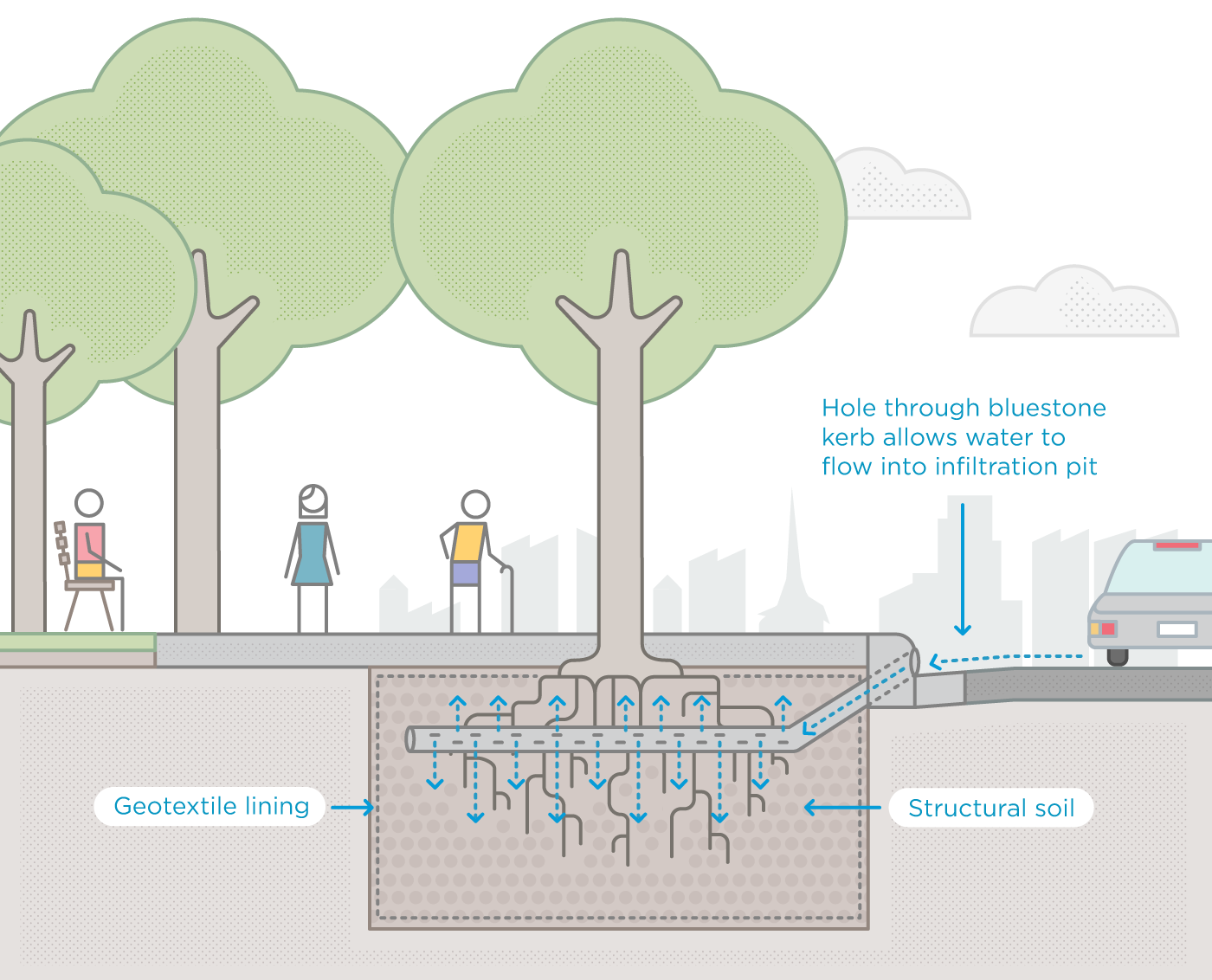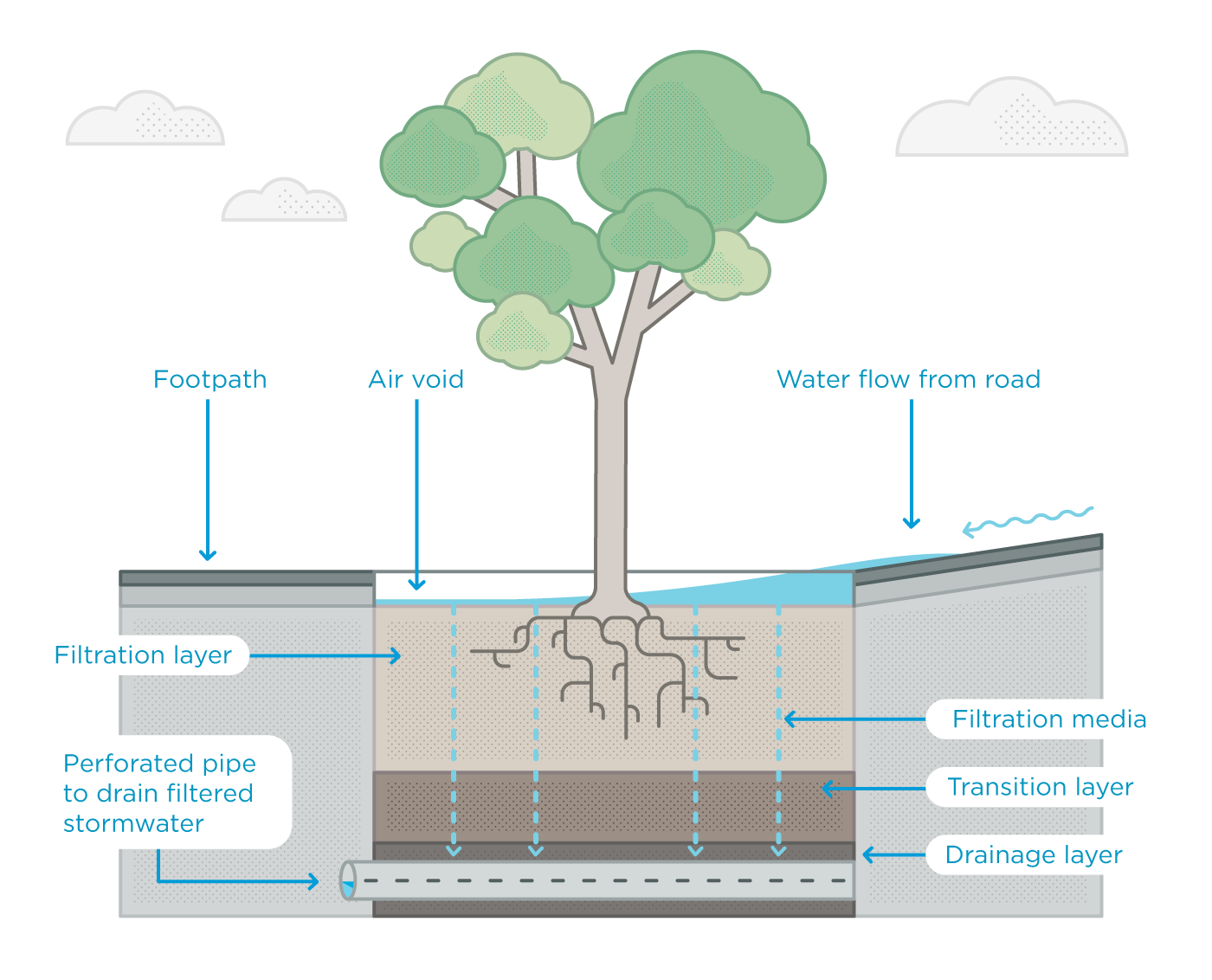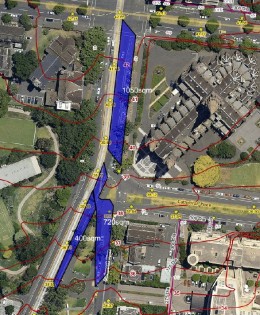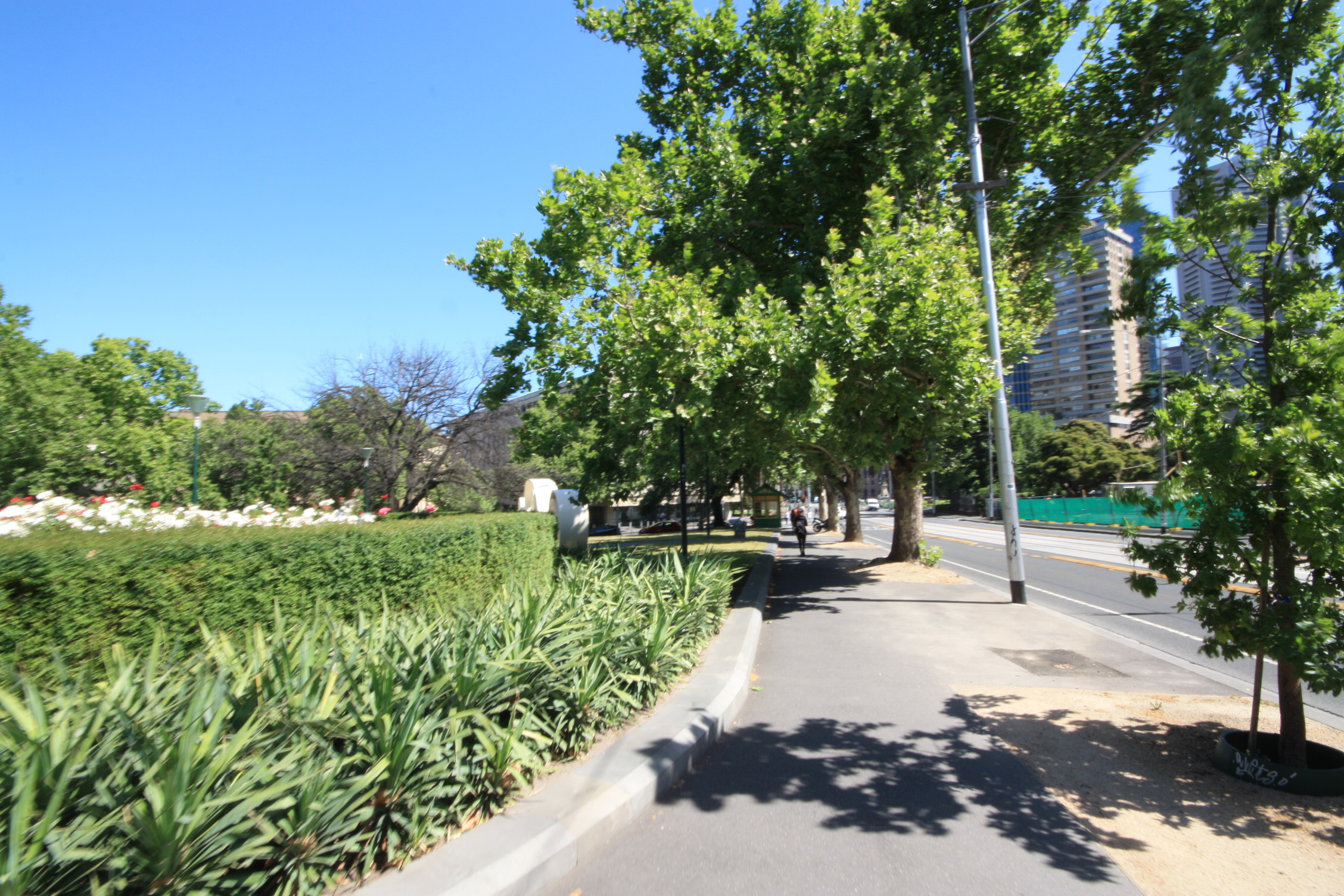Burston Reserve Passive Irrigation
Passive irrigation in this park will make the trees more resilient in a changing climate.
Burston Reserve is a small park located between Parliament Place and Macarthur Street at the eastern edge of the central city.
In 2012 the City of Melbourne released its Urban Forest Strategy. The strategy outlines the importance of the urban forest and green open spaces in cooling the city and adapting to climate change.
At this time, several of the trees in Burston Reserve had either been removed or were in very poor health. The reserve was upgraded to increase its green footprint and open space and to become a water sensitive landscape.
The park redesign included:
- Expanding turf and garden areas and reducing the width of surrounding footpaths.
- Installation of three new raingarden tree pits to capture stormwater runoff from Macarthur Street.
- Installation of two soaker pits to capture runoff and direct it to four new trees.
- Removing and replacing declining trees and planting additional trees.
What benefits has the Burston Reserve redesign provided?
- Increased canopy cover in the reserve, helping to reduce urban heating.
- Increased the amount of green open space in the reserve.
- Provided a sustainable source of water to keep the trees healthy.
- Reduced the use of drinking water for park irrigation.



